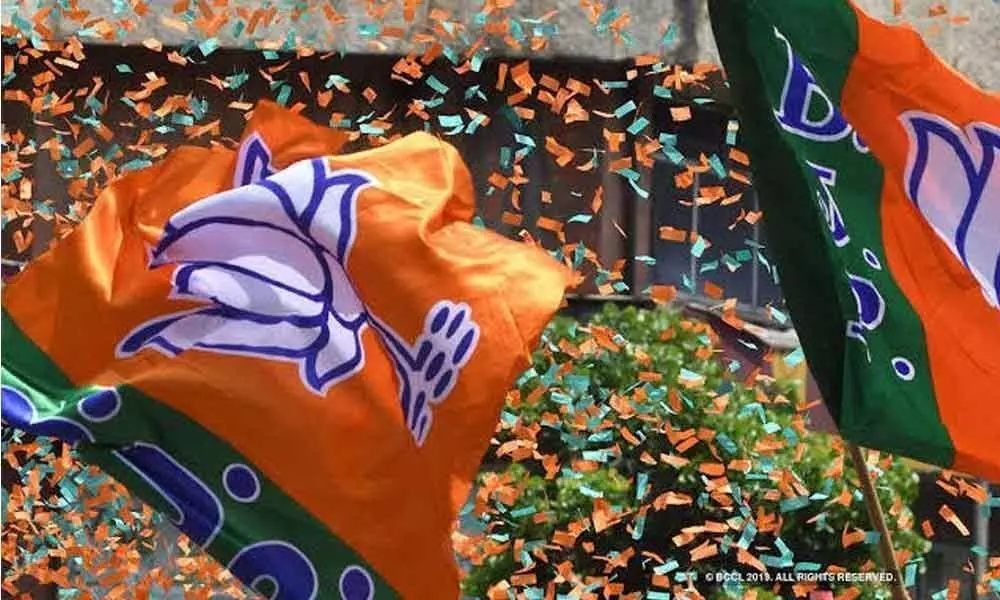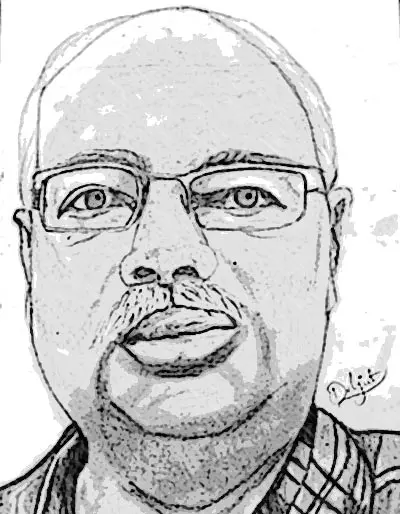Live
- Additional Collector Conducts Surprise Visit to Boys' Hostel in Wanaparthy
- Punjab hikes maximum state-agreed price for sugarcane, highest in country
- Centre okays PAN 2.0 project worth Rs 1,435 crore to transform taxpayer registration
- Punjab minister opens development projects of Rs 120 crore in Ludhiana
- Cabinet approves Atal Innovation Mission 2.0 with Rs 2,750 crore outlay
- Centre okays Rs 3,689cr investment for 2 hydro electric projects in Arunachal
- IPL 2025 Auction: 13-year-old Vaibhav Suryavanshi becomes youngest player to be signed in tournament's history
- About 62 lakh foreign tourists arrived in India in 8 months this year: Govt
- IPL 2025 Auction: Gujarat bag Sherfane Rutherford for Rs 2.60 cr; Kolkata grab Manish Pandey for Rs 75 lakh
- Assam CM meets Governor, cabinet expansion on the cards
Just In

Is the era of regional parties coming to an end? Looking back, it appears that what began as a sort of revolution in Indian politics wherein the regional parties started emerging on the political scenario from 1980 and reached a watermark for State-based parties between 1996 and 2014 and led two governments at the Centre has now come a full circle and are heading towards a low ebb.
Is the era of regional parties coming to an end? Looking back, it appears that what began as a sort of revolution in Indian politics wherein the regional parties started emerging on the political scenario from 1980 and reached a watermark for State-based parties between 1996 and 2014 and led two governments at the Centre has now come a full circle and are heading towards a low ebb.
During their days, the regional parties played dominant roles and had greater say in decision making at national level.
From a position of being dictated, they rose to the level of calling the shots. But now it appears that they are back to almost where they began.
For example, in Andhra Pradesh, NTR's invocation of 'Telugu Pride' worked so well that he was catapulted into the seat of power within nine months of forming the political party and he had a sway on national politics thereafter for quiet some time.
The TDP, under the leadership of N Chandrababu Naidu, continued its importance in national politics even after the death of NTR.
In West Bengal, the emergence of Mamata Banerjee who successfully demolished the Left bastion and got into the driver's seat has so far been all powerful.
By taking up the fight for separate State of Telangana and sustaining the struggle for 11 long years, the Telangana Rashtra Samithi (TRS) firmed up its hold over Telangana politics.
Similarly, in North India, the Samajwadi Party and the BSP in Uttar Pradesh, the Rashtriya Janata Dal led by Laloo Prasad Yadav, Janata Dal (U) in Bihar led by Nitish Kumar, the Lok Dal in Haryana and the Akali Dal in Punjab virtually pushed the major political parties including the Congress and the BJP to a corner.
This phenomenal growth in the number of parties in the last two decades saw the emergence of new regional power centres. The 15th Lok Sabha saw highest number of regional and sub regional parties.
According to statistics, about 38 such parties were represented in the lower House. The enfeebled national parties and rise of regional parties changed the nature of politics in India. At one point of time, it appeared that it was difficult for a single party to form government in New Delhi.
Even in the last elections, the regional parties felt that the Lok Sabha would get a fractured mandate as the Congress had failed to revive its magic and the BJP got exposed because of some of its decisions like demonetisation and hence they will have a very big say in chiselling the future of the country.
But now it appears that the regional parties will not be able to have any kind of control over the shape of governance at the Centre and their political space might shrink further.
The aggregate vote share won by these parties has been fluctuating between 1996 to 2009. Though the vote percentage of regional parties in 2009 was highest at 53 percent, the number of seats it won had declined.
In 2014 the apple cart of the regional parties got dashed as the BJP came to power with big majority and by 2019 it succeeded in further marginalising the Congress party and dashed all the hopes of the regional parties which tried their best to defeat the NDA led by BJP.
By winning the elections with massive majority, the BJP has proved that its end goal is to now focus on the discrediting the regional parties.
It has succeeded in its attempt to discredit the TDP in last elections in Andhra Pradesh and is now keeping a close watch on the YSRCP government.
Simultaneously, it has chalked out an action plan to keep the pressure on the TRS in Telangana. Whether the leaders of these regional parties accept or not, the fact is that they are under immense pressure to remain relevant.
The very fact that Telangana Chief Minister K Chandrashekar Rao who at one point of time had challenged the Prime Minister to wait at one of the public meetings for a debate on certain issues like power and water, has now chosen to maintain a low profile and the statement of Andhra Pradesh Chief Minister Y S Jagan Mohan Reddy who a few months back described the 151-seat victory as God's script, is now saying that he was ready to face the situation even if all those who are opposed to him join hands against him speaks volumes.
He even summoned his MP for responding to Prime Minister Narendra Modi's Namaskar in Parliament. This shows how shaky the regional parties are.
One thing appears to be certain that the BJP has succeeded in sending the message clear that the Damocles' sword is hanging on the regional parties particularly in the southern States.
But then, it is not correct to blame the BJP for all this. The regional parties which had tasted power at the Centre started assuming that they are inseparable.
They in their quest to remain in power or to come to power, have been promising freebies of all kinds and giving fancy names to their schemes.
They had become so impractical in their vison that the burden of implementing the so-called welfare schemes had to be borne by the taxpayer.
Having focussed on the welfare schemes, they have ignored to take necessary measures to improve revenue generation which could at least partially help in funding the welfare schemes.
As a result, the common man got used to freebies and his expectations started increasing and the political parties in their lust for power also have been making more and more promises and the end result is empty coffers.
A situation particularly in the two Telugu States is that they are left with no option but to borrow money to implement the welfare schemes just to prove that they are one up over the Centre. They also claim that the Centre should adopt their schemes.
Amidst this scenario, it now remains to be seen whether the latest development of Shiv Sena, the NCP and Congress forming into an alliance with Udhav Thackeray leading the alliance government would succeed for five years or not.
If one decodes the Maha developments, one thing is clear that a lot depends on how long the Khichidi Sarkar will last on the attitude of the Congress party.
Undoubtedly, the main responsibility to see that the alliance survives would be on Sharad Pawar who has been the main architect in stitching this alliance.
Already news is making rounds that Sena-led government would take some crucial decisions like Y S Jagan Mohan Reddy did in Andhra Pradesh by cancelling all the decisions made by the previous TDP government.
It is being said that the first decision would be to withdraw from the Mumbai-Ahmedabad bullet train project saying that it would like to spend the State share of Rs 5,000 crore on various other welfare measures.
If the government starts on a discordant note, it may have to face an uphill task more so because like YSRCP government, the Sena too has no experience in governance.
Will Sena agree to be remote controlled government by NCP and Sonia?

© 2024 Hyderabad Media House Limited/The Hans India. All rights reserved. Powered by hocalwire.com







